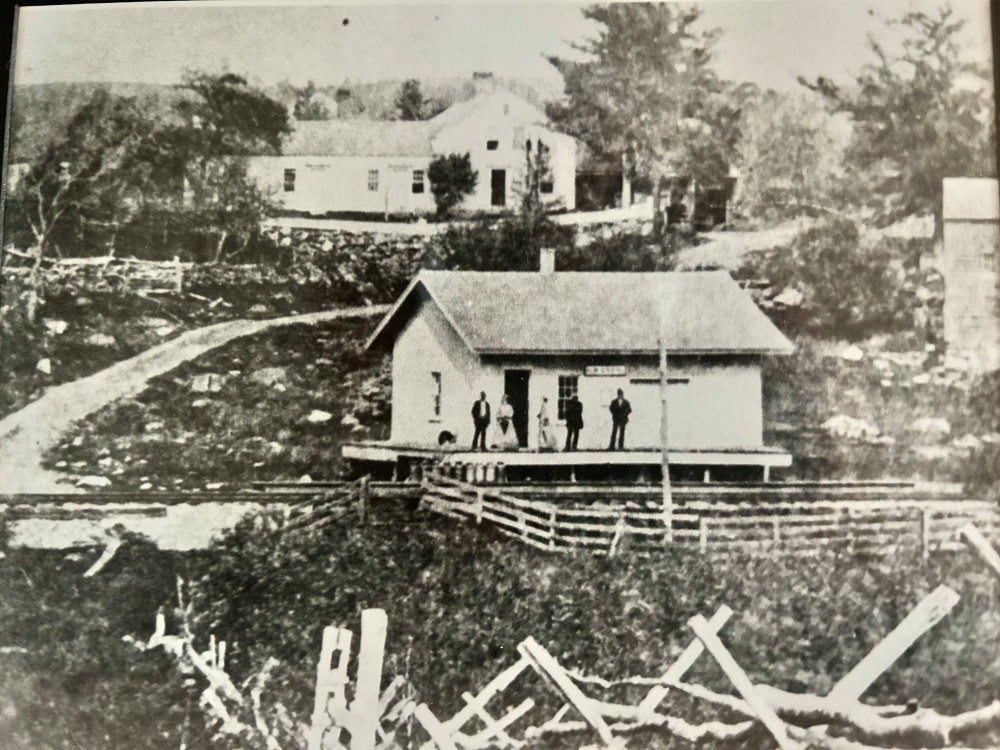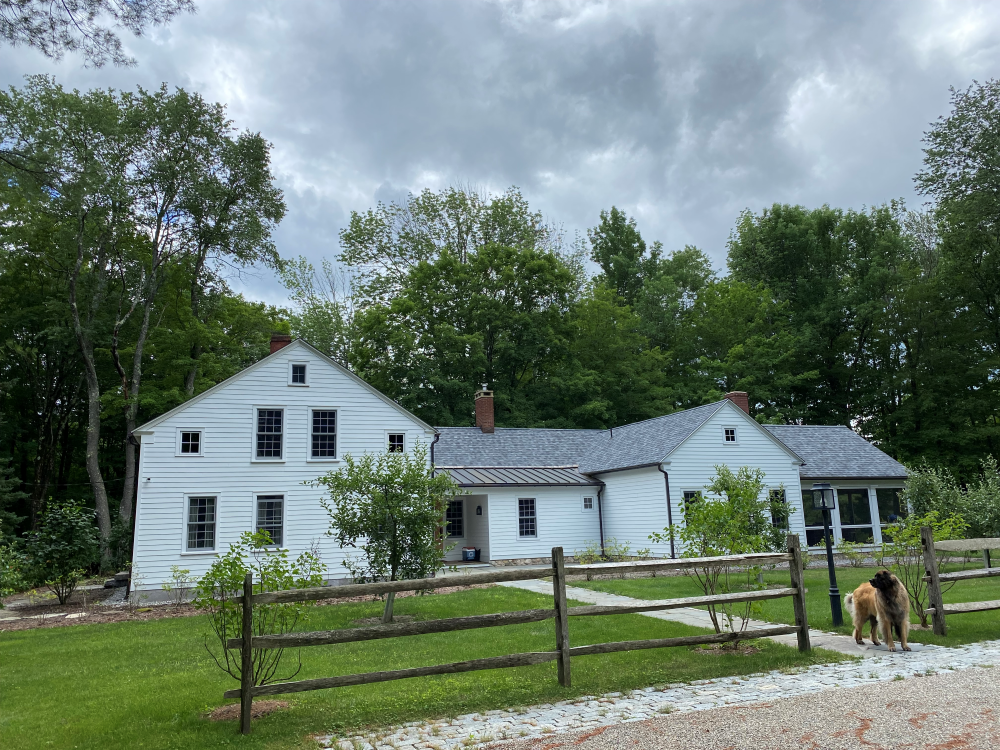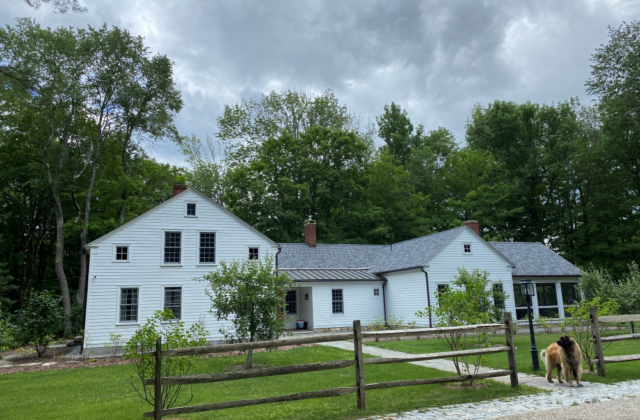This Old Norfolk House
The Grant Homestead
By Lindsey Pizzica Rotolo
When we were looking at houses in Norfolk about 20 years ago, there were three homes on the market for under one million dollars: two charming but overpriced Victorians in the center of town and a 244-year-old colonial on the Winchester Center town line that looked like it could collapse at any moment. Somehow, the latter seemed like the best choice.
I was immediately fascinated by the age of the home and its early occupants, a curiosity that sent me into the depths of the Norfolk Historical Society. Unfortunately, all I found was an 1885 photograph of people standing on the Grantville Station platform with our house in the background and two pages from “South Norfolk Then & Now,” written by Minnie Humphrey in the 1950s, with a few paragraphs about the Grant family.
I lamented to the man we bought the house from, Richard Napoli, and he shared some of his own research, including copies of town quitclaims and deeds evidencing that our home’s original occupant, Elijah Grant, had paid 40 pounds to “Litchfield County and the Colony of Connecticut” for his spot in South Norfolk.

The Grant Homestead, above the Grantville Station, in 1885.
Since this corner of Norfolk remains mostly undeveloped today (with the exception of the wind turbines), it is easy to picture what the Grants saw in the mid-1700s: dense forest, rugged hills and a beautiful winding river. Town Hall records confirm that Elijah Grant built the house at the corner of what are now Grantville and Schoolhouse Roads prior to 1761, making it one of the earliest homes in Norfolk.
My greatest question, “How did they end up here?” was answered by a look at the Grant family lineage. Elijah Grant’s great-grandfather, Matthew, was born in England in 1601 and became part of the “Great Pilgrim Migration.” He, his wife and daughter sailed on the “Mary and John” and were among those dropped at the mouth of the Charles River on May 30, 1630, three months before Boston was founded. They walked five miles south and established Dorchester, Mass. In 1635, they followed their minister to set up a new colony in Windsor, Conn.
Elijah Grant, born in 1728 in Litchfield, moved to Norfolk in the 1750s. He married Mary Andrus and had four sons: Roswell, Moses, Joel and Levi. Two of them lived in the family homestead until their deaths.
A historical record of Grantville written by Obadiah Smith in 1901 recalled that the Grants were “one of the leading families in the south part of town.” Smith mentioned in particular Roswell Grant, who joined the Continental Army at the age of 17 and saw hard service in the Revolutionary War, and two of Moses Grant’s daughters—one who founded Mount Holyoke Seminary and another who married Deacon Amos Pettibone.
One of the things that makes the Grant homestead unique among early Norfolk homes is how few families have lived there in its 262 years. Remarkably, the house stayed in the Grant family from the mid-1700s until the early 1900s, when it was bought by Hemlock Hill Farm, a land conservation effort of Helen Hartley Jenkins and Michael Pupin. They sold it in 1927, along with five neighboring parcels totaling 1,250 acres, to Victor Toillon for “$1 and other goods and valuable considerations.” Toillon was the tax collector in Torrington; he owned a saloon there and was a known bootlegger.
Upon his death, another land conservation effort bought the farm, including the Grant homestead, 289 Grantville Road and the surrounding 1,250 acres, for $90,000 in 1964. Toillon’s wife, Sadie, arranged with the land partnership to live in the Grant homestead until—well…until we had her ghost exorcised from our daughter’s bedroom in 2011. But that’s another story. The house was purchased by the Napolis in 1993, and we bought it from them in 2005, making us only the fourth family to have lived there since 1761.
Looking back at 2005 photos, our house is barely recognizable. We spent 10 years taking the primitive 18th-century home into the 21st century with great care to preserve its history. Original beams were exposed and siding replaced, bedrooms and bathroom were renovated and an addition was built. Simon Aldridge, our architect, kept us in line through all the projects, not allowing us to alter the floor plan of the original home or rip out the ladder-like stairs to the second floor.
Of course, there are still things that haven’t changed in 262 years: the beauty and function of the beehive ovens, the warmth and sturdiness of the chestnut beams and floors, the charm of the little cabinets above the fireplaces and the enduring function of the original interior doors and hardware. There’s a lot to be said for a place that has remained relatively unchanged for centuries. How fortunate we are to call it home.

Lindsey and Jon Rotolo spent 10 years renovating their Norfolk house, built in 1761.
This is the fifth in a series of articles on 18th-century Norfolk houses. A longer version of this article will soon be posted on the website of the Norfolk Historical Society.

